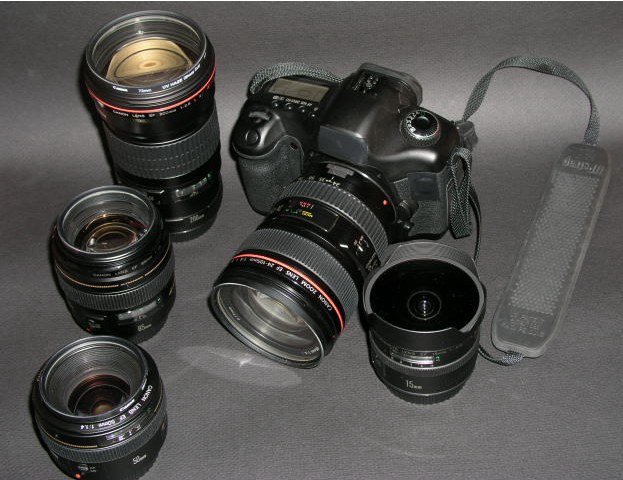What’s good and what rankles.
It’s been some two years since I bought my Canon 5D, an appropriate milestone from which to reconsider what is good and bad about the decision.
Since then the price has come down significantly, meaning almost a 30% drop yet, amazingly, with other market segments seeing many model changes since, the 5D remains available and has not been upgraded. I have no idea how sales of this model compare with Canon’s other offerings, and I suppose you could argue that they haven’t made a replacement because sales are very high …. or very low.
I don’t care. It remains a quantum leap in making the picture taking process an easier one. Forget all the mind numbing choices in all those menus, the reality is that the chances of making a technically solid picture, sharp, properly focused and grain free have risen manyfold owing to this superb machine. Plus you can make a perfect print of any size you want from just about any frame. More time for seeing, less for worrying.
Things I like:
- The 3:2 aspect ratio of the frame. I grew up with Leicas. It would be even nicer at 16:9 widescreen.
- The large, uncluttered, near life-size, viewfinder.
- The fact that the depth of field and coverage of a 50mm lens …. remain the depth of field and image coverage of a 50mm lens on a film camera.
- The grain free sensor – the ISO adjustment is just another way of controlling aperture and shutter speed. I never worry about grain. If I need grain, something like this works.
- The great selection of inexpensive Canon lenses – the non-zooms I own are mostly wonderful.
- The lack of shutter lag – as good as a Leica M2 or M3.
- Autofocus. With mediocre eyesight like mine the fabulous rangefinder in the Leicas is improved upon by modern technology. And it’s faster.
- Spot focus/lock/recompose. Never another unsharp studio picture.
- Auto exposure. Another impediment removed.
- Spot exposure measurement for those difficult occasions.
- The reliability. The 5D’s OS makes a Mac look like a dog. You never have to reboot.
- The battery life. Simply incredible. Carrying a spare hardly seems necessary.
- The 85mm f/1.8 EF Canon lens. The Leica Apo-Summicron Asph at a fraction of the cost.
- How all that automation makes use with a 400mm Canon ‘L’ lens so easy.
Things I dislike:
- The bulk. Bigger than my Leica Ms, it’s no joy to tramp around with.
- The noise. Not bad, but silence would be nicer.
- An LCD screen which is unusable outdoors.
- Poor auto white balance indoors but easily fixed with one click in Lightroom.
- The attraction the sensor has for dust. I mitigate that by using (superior) non-zoom lenses, but that’s not the answer. Actually, it’s more the pump design of Canon’s 24-105mm zoom and poor dust sealing in the lens that seems to be to blame here.
- The advertising – that big white ‘Canon’ logo and crass ‘5D’ sticker – both easily fixed with some black tape. You want me to advertise your goods you pay me, OK?
- That criminally inept stock strap. Criminal, as the first thing it will do is make sure your camera falls off your shoulder.

5D and friends. Not a worthless lens hood in sight. - The fact that I take too many pictures. Digital makes you lazy, less selective. Good digital management in the likes of Lightroom helps. But nothing beats the Delete button.
- That horrid flap.
But, taken as a whole, these really are minor gripes in exchange for the wonderful image quality.
The 5D will likely be updated/obsoleted any day now, but for this photographer it remains the bees’ knees. Would I buy it today in preference to anything else? Absolutely. The improvements in Mark II – sensor dust removal apart – will be visible to academics only. But the 5D (Mk. I or II) only makes sense if you like to make Really Large Prints. For web display even a 2 megapixel P&S is fine.

The Canon 5D. A new era in equipment.